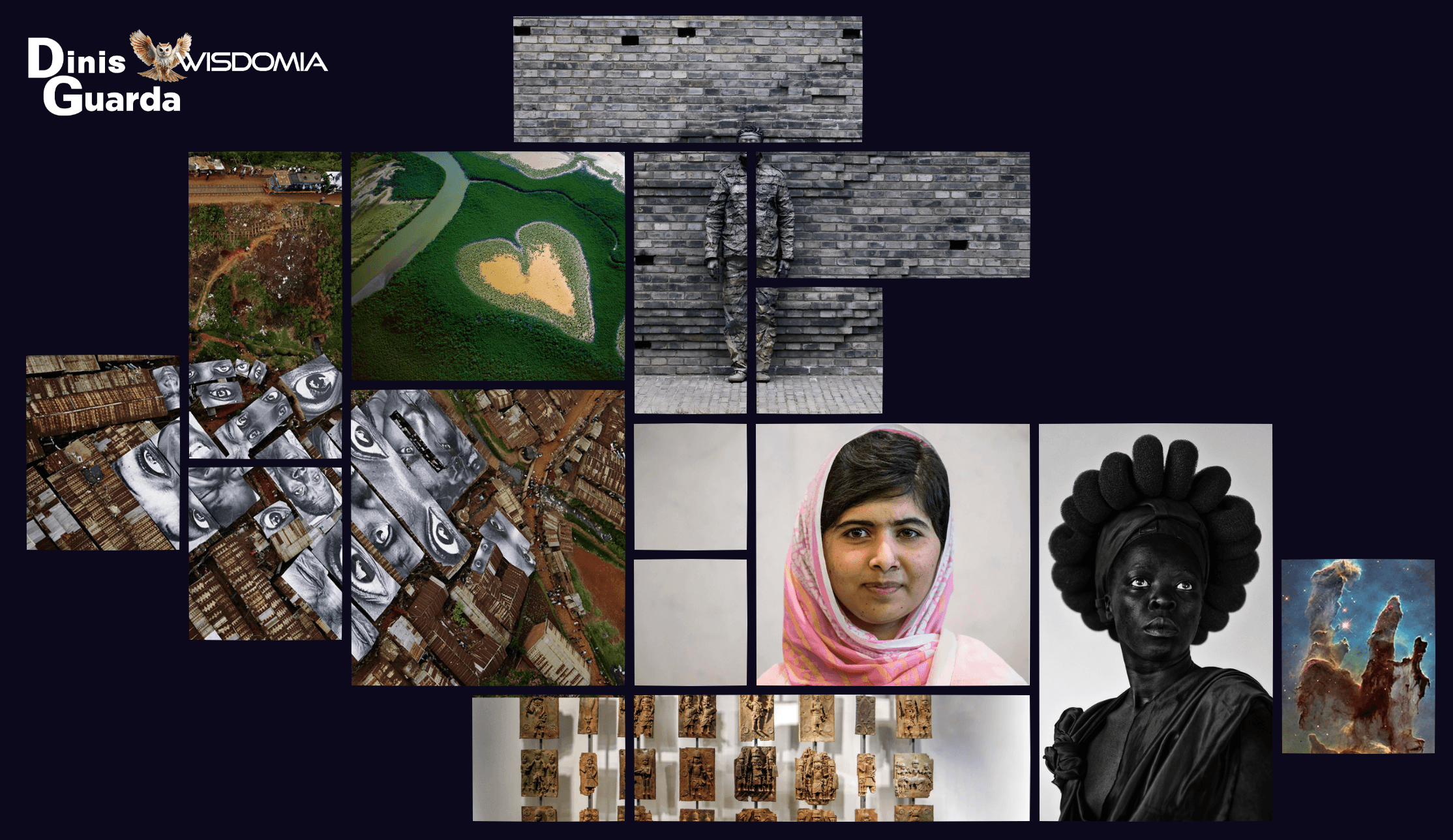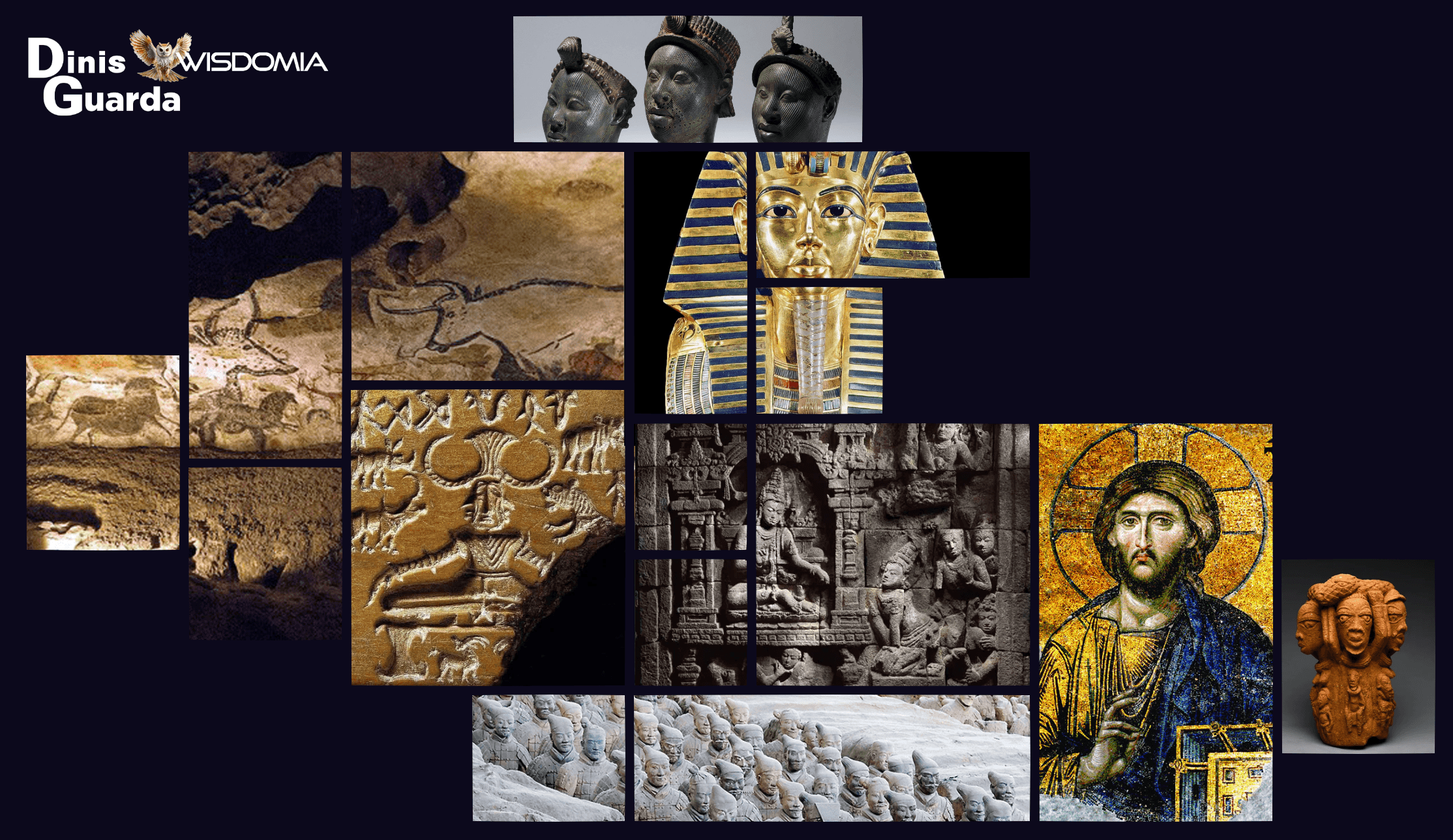Beneficial Mutations: Real-World Examples and Their Impact
Sara Srifi
Mon Aug 11 2025

Explore beneficial mutations examples and their real-world impact. Learn about mutation types, research pioneers, and tools for identification.
So, we hear a lot about genetics and how our DNA can change. Sometimes these changes, called mutations, can be pretty bad, leading to sickness. But what if I told you some mutations can actually be good? It sounds wild, right? We're going to look into some real-world examples of these beneficial mutations and see how they've made a difference. It’s not all doom and gloom in the world of DNA changes; sometimes, a little tweak can go a long way.
Key Takeaways
- Mutations are changes in our DNA, and they come in different sizes, from tiny gene tweaks to bigger shifts in chromosomes.
- Not all mutations are harmful; some can be neutral or even helpful, though most do cause problems.
- Scientists like Wilhelm Weinberg, J. B. S. Haldane, and H. J. Muller were early explorers who helped us understand how mutations happen and how to study them.
- Things like a father's age can influence the rate of certain DNA changes passed down, but not all types of mutations are affected the same way.
- Figuring out these beneficial mutations involves using special computer tools and looking through lots of scientific papers and databases.
Understanding the Spectrum of Genetic Mutations
Genetic mutations are the fundamental drivers of change in our DNA. Think of them as tiny typos or larger edits in the instruction manual for life. These alterations can happen in a few different ways, and understanding these differences is key to grasping their impact.
Gene Mutations: The Building Blocks of Change
These are the most common type, affecting just one or a few "letters" of the DNA code. It's like changing a single word in a sentence. Most of the time, these changes are pretty minor, maybe even unnoticeable. They can be as simple as swapping one DNA base for another, or a small section being added or removed. While many gene mutations have no real effect, some can lead to big changes, like altering a protein's function. It's fascinating how such small shifts can have such varied outcomes.
Chromosomal Mutations: Larger Scale Alterations
These mutations are more like rewriting entire paragraphs or chapters of the DNA manual. They involve significant changes to chromosomes, the structures that package our DNA. This could mean losing a whole chunk of a chromosome, duplicating a section, or even flipping a piece around. Because so much genetic information is involved, these mutations often have more dramatic effects, sometimes leading to developmental issues or serious diseases. It's a much bigger disruption than a simple gene mutation.
The Nuance of Mutation Effects: From Neutral to Significant
It's easy to think of mutations as always being bad, but that's not quite right. The effect of a mutation really depends on where it happens and what it changes. Some mutations are completely neutral, meaning they don't affect how an organism functions at all. Others might be slightly beneficial, giving an organism an advantage in its environment – these are the ones we're really interested in for this article. And then, of course, there are the harmful ones that can cause disease or reduce an organism's ability to survive. The spectrum is wide, and it's this variety that makes studying mutations so interesting. For instance, some mutations might be silent in one context but become significant under different environmental pressures, like certain driver mutations in cancer.
“The impact of a genetic change isn't always immediate or obvious. Many mutations might only show their effects under specific conditions or over long periods. This subtle nature makes them tricky to study but also highlights the dynamic relationship between our genes and the world around us.”
Pioneers in Mutation Research
When we talk about understanding how our genes change, it's easy to get lost in the technical details. But a lot of the groundwork was laid by some really smart people who were just trying to figure things out. Think of them as the original explorers of our genetic landscape.
Wilhelm Weinberg's Contributions to Human Heredity
Wilhelm Weinberg, a physician who delivered over 3,500 babies, also found time to be a pioneer in studying human heredity. He came up with some clever ways to look at how traits are passed down. One of his really interesting ideas was that the age of a father might actually affect the rate at which new genetic changes, or mutations, occur. It sounds simple now, but back then, this was a pretty big leap in thinking about genetics.
J. B. S. Haldane: Measuring Mutation Rates
Then there's J. B. S. Haldane, a guy who seemed to know a little bit about everything. He was one of the first to actually try and measure how often mutations happen in humans. He also noticed something pretty neat: the rate of mutation seemed to be different between males and females. His work was super important for connecting Mendelian genetics with Darwin's ideas about evolution, helping to build what we now call the modern evolutionary synthesis. You can read more about his foundational work in evolutionary biology.
H. J. Muller and the Experimental Study of Mutation
H. J. Muller took things a step further by making mutation a subject you could actually experiment on. He figured out a way to objectively measure mutations and showed that things like X-rays could cause them. Later in his life, he became a big advocate against unnecessary radiation exposure for people. It's kind of funny, though, because he didn't focus as much on chemical mutagens, probably because the ones known at the time were also really toxic. If he'd known about safer chemicals that could still cause mutations, he might have broadened his campaign.
Mutation Rates and Paternal Age
It's pretty interesting how a father's age can actually play a role in the genetic makeup of his children. We're talking about mutation rates here, and it turns out that as men get older, the chances of certain genetic changes happening in their sperm can increase. This isn't just a small, linear jump either; the data suggests it's more of a nonlinear increase.
Think about it this way: men are constantly producing sperm throughout their lives, and each time a cell divides to create new sperm, there's a small chance of a copying error, a mutation. The older a man gets, the more of these cell divisions have happened in his germline. So, more divisions mean more opportunities for those little errors to pop up.
The Influence of Paternal Age on Base Substitutions
For specific types of mutations, like single base substitutions, the link to paternal age seems pretty clear. Studies looking at conditions like Apert syndrome and achondroplasia show a noticeable rise in the occurrence of these mutations as the father's age goes up. It's not just a simple one-to-one relationship with age, though. The increase seems to follow a pattern that's faster than just adding a fixed number of mutations per year.
Germline Cell Divisions and Mutation Frequency
The leading idea to explain this is the sheer number of cell divisions. In males, germ cells keep dividing from puberty onwards. Compare that to females, where the egg cells are essentially set by the time a girl is born. This difference in continuous cell division in males is thought to be a major driver behind the higher mutation rates observed and the effect of paternal age.
Deletions and Rearrangements: A Different Pattern
However, not all mutations seem to follow this same pattern. Some studies suggest that larger-scale changes, like deletions or rearrangements in chromosomes, might not be as strongly tied to paternal age. This hints that the mechanisms causing different types of mutations might vary, and some might be less sensitive to the cumulative effect of cell divisions over time. It’s a complex picture, and researchers are still working to figure out all the details.
The idea that older fathers might contribute more new mutations is a significant one. It suggests that the timing of reproduction could have a tangible impact on the genetic health of offspring, and it opens up avenues for thinking about how to potentially reduce these risks in the future.
The Impact of Mutations on Welfare
It's easy to think of genetic mutations as these big, dramatic events that cause rare diseases, and sure, some do. But the reality is that mutations are happening all the time, and most of them, if they have any effect at all, tend to be a bit on the unhelpful side. It’s like tiny little errors creeping into the instruction manual for life. Over generations, these small changes can add up, and that's where things get interesting when we talk about the overall well-being of a population.
The Deleterious Nature of Most Mutations
Most of the time, when a gene mutates, it doesn't suddenly become super-powered. Instead, it often loses some function or starts doing something slightly wrong. Think of it like a typo in a recipe – you might still be able to bake the cake, but it might not turn out quite as good. These small, negative changes are called deleterious mutations. While they might not cause immediate, obvious problems, they can subtly reduce an organism's ability to survive or reproduce. It's estimated that for every beneficial mutation, there are many more that are neutral or harmful. This constant influx of slightly faulty genetic information is something populations have to deal with.
Evolutionary Significance of Mutation
Even though most mutations are not helpful, they are still incredibly important for evolution. They are the raw material that natural selection works with. Without new mutations, there would be no new traits for the environment to select for or against. It’s a bit of a paradox: the very things that can cause problems in the short term are also what allow species to adapt and change over long periods. This is how life on Earth has become so diverse. For instance, bacteria can evolve resistance to antibiotics through mutations, a process that has significant implications for public health.
Mutation as a Factor in Human Health
When we look at human health, the impact of mutations becomes very clear. While some mutations cause well-known genetic disorders, many others contribute to more common conditions like heart disease, diabetes, or even certain types of cancer. The age of the father, for example, has been linked to an increased rate of certain mutations in offspring, likely due to the sheer number of cell divisions that occur in the male germline over time. This means that as fathers get older, there's a slightly higher chance their children might inherit a new mutation. It’s a complex interplay of genetics and biology that affects us all.
Here's a simplified look at how mutation rates can vary:
| Factor | Impact on Mutation Rate |
| Paternal Age | Increases for some types |
| Germline Cells | More divisions = higher rate |
| Environmental Factors | Can increase or decrease |
It's a constant balancing act. Our bodies have ways to repair DNA damage, but these systems aren't perfect. So, while we benefit from the variation mutations provide, we also carry the burden of their potential negative effects. Understanding these processes helps us appreciate the intricate dance between our genes and our health.
Tools for Identifying Beneficial Mutations Examples
Finding beneficial mutations in scientific literature can feel like searching for a needle in a haystack, but thankfully, there are tools to help. These software solutions are designed to sift through vast amounts of text, pulling out specific genetic variations and their associated effects. It's not always straightforward, though; different tools have their strengths and weaknesses, and what one tool might miss, another could catch.
Assessing Mutation Extraction Tools
When we look at tools like MutationFinder (MF) or the Extractor of Mutations (EMU), we see different approaches. MF, for instance, uses regular expressions and was one of the first out there. It's pretty good at finding point mutations, with a reported precision of 0.984 and a recall of 0.817. EMU, on the other hand, was built to grab a wider variety of mutations, including DNA insertions and deletions, not just protein changes. It even does sequence checks to make sure its findings are solid.
Challenges in DNA and Protein Variant Annotation
One of the tricky parts is that not all tools focus on the same thing. Some, like OMM and MF, primarily annotate protein substitutions. Others, like EMU, can handle both protein and DNA variants. Then there's the issue of identifying insertions; many tools struggle with these, often labeling them as 'unknown' even when they're clearly insertions. It’s a bit of a mixed bag, and you have to know what you're looking for to pick the right tool. For example, SOuLMuSiC is a valuable tool for identifying mutations that impact protein solubility. It can play a major role in the rational design of proteins.
The Role of Databases in Mutation Curation
Databases are also super important here. They act as a reference point, helping researchers validate the mutations found by these extraction tools. Comparing tool outputs against established databases like COSMIC or InSiGHT gives a sense of how reliable the tools are in a real-world biocuration context. It turns out a lot of mutation data is hidden away in supplementary materials or tables within articles, not just in the main text or abstracts, which is where these tools really earn their keep.
Here's a quick look at how some tools handle different mutation types:
- Substitutions: Most tools are good at finding these.
- Deletions: Generally well-handled by more advanced tools.
- Insertions: Often a challenge, frequently misidentified or missed.
- Duplications: Some tools can identify these, but it's less common.
The effectiveness of these tools often depends on the specific type of mutation being sought and where in the scientific paper that information is located. Combining multiple tools can often yield better results because their coverage is complementary.
Navigating Mutation Data in Literature
Assessing Mutation Extraction Tools
When we look at the scientific papers, finding specific mutation details can be tough. Lots of research papers talk about genetic changes, but not always in a way that's easy for computers to understand.
That's where specialized tools come in. These programs are designed to scan through text and pull out mentions of mutations. However, they aren't perfect. Some tools are better at finding certain types of mutations than others. For instance, a tool might be great at spotting simple changes like a single letter swap in DNA, but struggle with more complex events like large deletions or insertions. We need to be aware of these differences when we use them. It's like having a toolbox; you wouldn't use a hammer to screw in a bolt. Understanding what each tool is good at helps us get the most accurate information. Some studies have looked at how well these tools work, comparing their results against manually curated data. This helps us know which ones to trust more for specific tasks.
For example, one study found that while tools are getting better, processing supplementary materials alongside the main text is really important for catching all the details [2f08].
Challenges in DNA and Protein Variant Annotation
Even after a tool finds a mutation mention, there's still work to do. The way mutations are described can vary a lot. Sometimes, a paper might say "1799T to A," which is pretty clear. Other times, it might be more complicated, like "c.423-6delAAATAGGTinsGAAGCAAGATCAG." This is where annotation comes in – trying to standardize these descriptions. The Human Genome Variation Society (HGVS) has developed a standard way to write these changes, which is a big help. But not everyone follows it perfectly, and sometimes the descriptions are just plain messy. This makes it hard for computers, and even humans, to be sure exactly what change is being described. It's a bit like trying to read a recipe where some ingredients are listed by weight, some by volume, and some just by a vague description like "a handful." Getting these details right is important because a small mistake in describing a mutation can lead to big misunderstandings about its effect.
The Role of Databases in Mutation Curation
Once we have mutation data, where do we put it? That's where databases come in. Think of them as organized libraries for genetic information. Places like OMIM (Online Mendelian Inheritance in Man) and HGMD (Human Gene Mutation Database) collect and store details about known genetic variations and the diseases they're linked to. These databases are super important because they provide a reliable source of information. Researchers can go to these places to check if a mutation they've found has been seen before. The process of getting information into these databases is called curation, and it often involves carefully reading papers and extracting the relevant mutation details. This manual work is time-consuming but necessary to ensure accuracy. Some efforts are underway to automate parts of this process, but human oversight is still key. Having well-curated databases makes it much easier to study the impact of different mutations across many studies.
The Landscape of Mutation Types
When we talk about genetic changes, it's not just one kind of thing. Mutations can happen in a few different ways, and understanding these differences is pretty important for figuring out what's going on. Think of it like different types of errors in a book – some are just a typo, while others are a whole sentence changed.
Substitutions, Deletions, and Duplications
Most of the time, when scientists talk about mutations, they're referring to changes at the DNA level. The most common types are substitutions, where a single "letter" in the DNA code is swapped for another. Then you have deletions, which are when a piece of the DNA sequence is just gone. Duplications are the opposite – a section of DNA gets copied one or more times. These are the bread-and-butter of genetic variation.
- Substitutions: A single base pair change (e.g., A to T).
- Deletions: Removal of one or more base pairs.
- Duplications: Repetition of a segment of DNA.
Challenges in Identifying Insertions
Insertions, where extra DNA is added into the sequence, can be a bit trickier to spot. Sometimes, the tools we use to find mutations might miss them, especially if they're not perfectly described using standard formats. It's like trying to find a missing word in a sentence versus finding an extra word that doesn't quite fit.
Handling Complex and Non-Standard Mutation Mentions
Things get even more complicated when mutations aren't described in the usual way. You might see mentions of ranges, like a change happening between two specific points, or descriptions that don't quite follow the official rules. Some tools are better than others at picking these up. For example, a mention like "exon 10" tells you where a change happened, but not what the change actually is. Or you might see something like "G:C to A:T transition" which is clear, but then there are also terms that just say "somatic mutation" without giving specifics. It really shows how varied the descriptions can be, and why having good annotation tools is so important.
The variety of ways mutations are described means we need flexible approaches. Some mutations can be found with simple pattern matching, but others require more sophisticated methods, like using large dictionaries of known genetic terms or even advanced AI to figure out what's being said. It's a constant effort to keep up with how new discoveries are reported.
Wrapping Up: Mutations and What They Mean
So, we've looked at how changes in our DNA, called mutations, can happen. Most of the time, these changes don't really do much, or if they do, it's usually not for the better. Think of it like a typo in a really long book – most typos don't change the story, but a few can mess things up. Scientists have been studying these changes for a long time, figuring out how they happen and how we can even spot them in text. It turns out that finding these specific changes in scientific writing is pretty tricky, and different computer tools have different strengths and weaknesses. By combining what these tools find, we can get a better picture. It’s a complex area, but understanding these tiny changes is key to understanding a lot about health and how life changes over time.
Frequently Asked Questions
What exactly is a beneficial mutation?
Think of mutations as tiny changes in the instructions (DNA) inside our bodies. Most of these changes don't do much, or they can even be harmful. But sometimes, a change can be helpful! These helpful changes are rare, but they can make a big difference in how living things survive and change over time.
Who were some important scientists who studied mutations?
Scientists study mutations to understand how life changes. Early researchers like Wilhelm Weinberg looked at how traits are passed down, while J.B.S. Haldane tried to figure out how often these changes happen. H.J. Muller even showed that things like radiation could cause mutations, which helped us learn how to protect ourselves.
Can a parent's age affect the types of mutations passed on?
Yes, it can! For example, the chances of certain DNA changes happening in sperm cells go up as a father gets older. This is because the cells that make sperm divide many times over a man's life, and each division is a chance for a small change to occur.
Are most mutations bad for our health or evolution?
Most mutations aren't good for us; they can cause problems or diseases. However, these harmful mutations are also important for evolution. They provide the variety that natural selection can act upon, helping species adapt to their environment over long periods. Beneficial mutations, though rare, are key drivers of this adaptation.
How do scientists find and study these helpful genetic changes?
Scientists use special computer programs and large collections of information called databases to find and understand these genetic changes. These tools help them read through DNA information and figure out what each change means, which is a complex but important task.
Why is it sometimes difficult to talk about or find information on mutations?
It can be tricky! Sometimes mutations are described in different ways in scientific papers, making it hard to compare them. Scientists are working on using standard ways to write down these changes so everyone can understand them easily. They also combine information from different tools to get a clearer picture.
previous
Embark on the Longest Train Ride in the World: A Journey Across Continents
next
Sulking: Understanding its Role as Indirect Communication
Share this

Sara Srifi
Sara is a Software Engineering and Business student with a passion for astronomy, cultural studies, and human-centered storytelling. She explores the quiet intersections between science, identity, and imagination, reflecting on how space, art, and society shape the way we understand ourselves and the world around us. Her writing draws on curiosity and lived experience to bridge disciplines and spark dialogue across cultures.
More Articles

The Digital Convergence: When Images Became Everything, Everywhere, All at Once

Modern Revolutions and the Digital Explosion: Images That Shattered and Rebuilt Reality

Renaissance Humanism and the Birth of the Modern Gaze: Images That Taught Us to See Ourselves

When Vision Becomes Destiny: The First 25 Images That Shaped Human Consciousness

What a Small Indian Village Teaches the World About Sustainability





